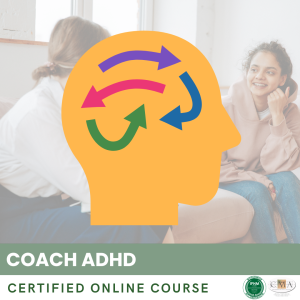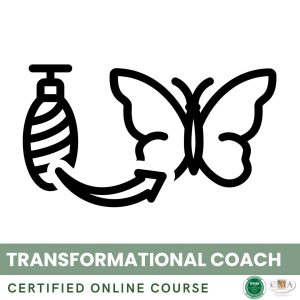Stress and emotional management is a crucial skill in Divine Feminine Healing guidance. In fact, chronic stress and suppressed emotions often underlie many physical, mental, and energetic imbalances in women. As a practitioner, your role is to help your clients better understand their emotional responses, to welcome their feelings with kindness, and to develop effective strategies for managing their daily stress.
Stress is a natural bodily reaction to a situation perceived as threatening or destabilizing. It triggers a cascade of physiological responses (release of adrenaline and cortisol, acceleration of heart rate, muscle tension, etc.) that prepare the body to confront the danger. This reaction is useful in cases of real threat but becomes problematic when chronically triggered by psychological stressors (work overload, relational conflicts, irrational fears, etc.).
Emotions are psychophysiological responses that inform us about our relations to ourselves, others, and the world. They combine physical sensations, thoughts, mental images, and impulses to act. There are five basic emotions: joy, sadness, anger, fear, and disgust. Each emotion has an adaptive function and a message to communicate. For example, fear alerts us to potential danger; anger motivates us to defend our boundaries; sadness prompts us to take care of ourselves following a loss.
However, in our society which values control and performance, we often learn to suppress or ignore our emotions, particularly those deemed “negative”. This emotional repression creates internal tensions, disrupts our ability to listen to and respect ourselves, and in the long term, can lead to psychosomatic disorders, compulsive behaviors, or uncontrollable emotional outbursts.
To assist your client in better managing her stress and emotions, you can offer different relaxation and emotional regulation techniques, such as:
– Deep breathing: breathe deeply through the nose, inflating the belly, then exhale slowly through the mouth, releasing tensions. This activates the parasympathetic nervous system, responsible for relaxation and regeneration.
– Heart coherence: synchronize your breathing with your heartbeat by inhaling for 5 seconds and exhaling for 5 seconds, several times a day. This regulates the autonomous nervous system and promotes a feeling of calm and well-being.
– Body scan: successively focus on each part of your body, observing the present sensations with kindness and consciously relaxing the tensions. This develops body awareness and deep relaxation.
– Mindfulness meditation: sit comfortably, focus your attention on your breath or a bodily sensation, and observe the flow of thoughts and emotions without judging or engaging with them. This exercises the “muscle” of attention and develops internal discernment.
– EFT (Emotional Freedom Technique): gently tap specific acupuncture points while focusing on an emotion or a problem to regulate the energetic system and soothe emotional tensions.
– Creative expression: use writing, drawing, painting, dancing, or singing to express and release emotions symbolically and cathartically. This recognizes, accepts, and transforms emotions.
Beyond these techniques, you can help your client develop emotional hygiene daily, for example, by suggesting:
– Keeping an emotions journal to record daily emotions, their intensity, triggering situations, and how she handled them. This develops emotional awareness and helps identify recurring patterns.
– Practicing authentic communication by expressing feelings and needs clearly and kindly, without blaming or demanding. This enhances self-confidence, assertiveness, and relational intelligence.
– Having regular refreshing moments by engaging in relaxing and enjoyable activities (a hot bath, a walk in nature, inspiring reading, massage, etc.). This relieves accumulated tension and promotes self-connection.
– Cultivating gratitude by noting three positive things each day to counteract the brain’s negativity bias and enjoy small everyday happiness.
– Developing self-compassion by kindly accepting your emotions and difficulties, as you would for a suffering child or friend. This changes internal shame and judgment into acceptance and unconditional support.
Learning to manage stress and emotions is a gradual journey requiring patience, gentleness, and practice. As a practitioner, your role is to offer your client a safe and kind space to explore her inner world, accept her feelings, and experiment with new regulation strategies.
Do not hesitate to share your stress and emotional management challenges and learnings to build an authentic and human relationship with your client. You can also provide her with inspiring resources (books, podcasts, videos) or fun exercises to deepen her self-understanding and gradually integrate new emotional habits.
The objective is to help your client develop a healthier and smoother relationship with her emotions—to listen to them as allies, not enemies, and to use them as an inner compass guiding her choices and actions towards greater alignment and fulfillment. By accompanying her on this emotional taming journey, you offer her valuable keys to unleash her full potential and radiate her feminine power with authenticity and tranquility.
Key Points:
1. Chronic stress and suppressed emotions often lead to physical, mental, and energetic imbalances in women.
2. Stress is a natural bodily reaction to perceived threats but becomes problematic with chronic psychological triggers.
3. Emotions are psychophysiological responses that inform us about our relations to ourselves, others, and the world. There are five basic emotions: joy, sadness, anger, fear, and disgust.
4. Emotional repression creates internal tensions and can lead to psychosomatic disorders, compulsive behaviors, or uncontrollable emotional outbursts.
5. Different relaxation and emotional regulation techniques can be used, such as deep breathing, heart coherence, body scan, mindfulness meditation, EFT, and creative expression.
6. Developing daily emotional hygiene is crucial, using tools like the emotions journal, authentic communication, refreshing moments, gratitude, and self-compassion.
7. Learning to manage stress and emotions is a gradual journey requiring patience, gentleness, and practice.
8. The practitioner’s role is to offer a safe and kind space to explore the client’s inner world, accept her feelings, and experiment with new regulation strategies.
9. The goal is to help the client develop a healthier and smoother relationship with her emotions, to listen to them as guides, and to use them as an inner compass for more aligned and fulfilling choices and actions.
👉 To download docx (Editable) file click here : Click here
👉 To download PDF file click here : Click here
👉 To download MP3 file click here : Click here












